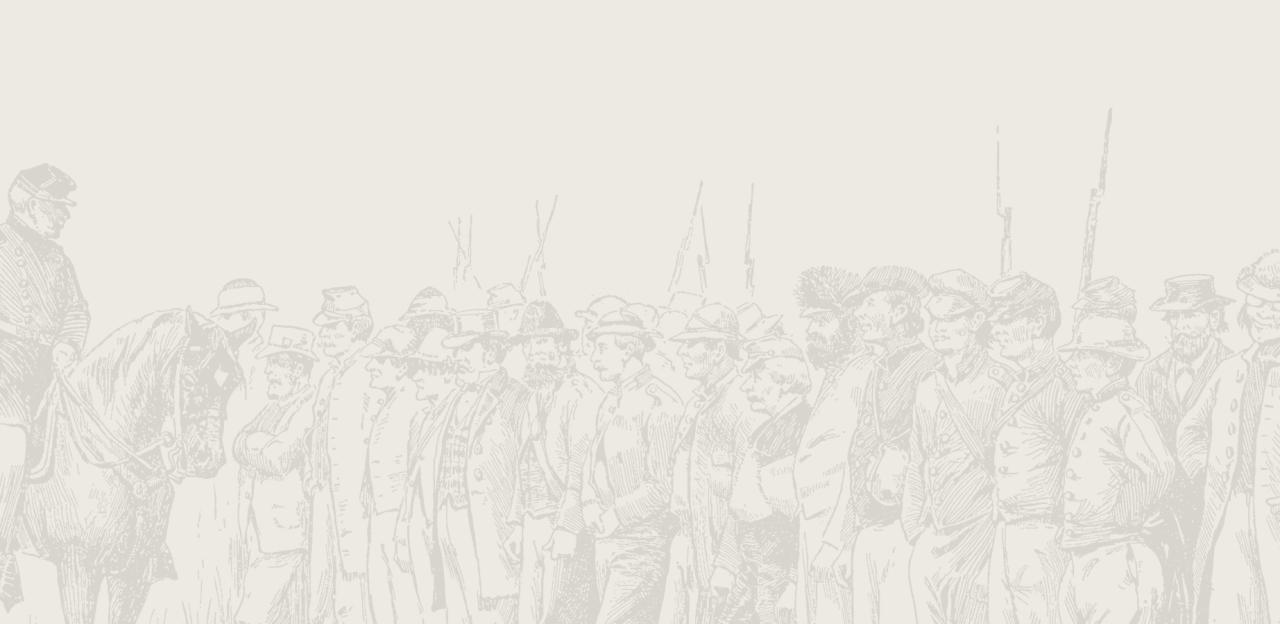Nashville

The Battle of Nashville
Due to a series of blunders at the Battle of Spring Hill and a catastrophic defeat at the Battle of Franklin in the closing days of November, 1864, Confederate General John Bell Hood failed to prevent a dangerous concentration of Union forces in Nashville, Tennessee. Unrelenting, Hood continued to drag his bloodied Army of Tennessee, approximately 30,000 strong, north towards the capital city, which was now protected by John Schofield’s Army of the Ohio as well as George Thomas’s Army of the Cumberland.
The presence of these two battle-hardened legions, numbering some 55,000 men between them, would ordinarily have precluded further offensive operations. But John Bell Hood was a determined man and his situation was dire—at that same moment, Sherman’s armies were nearing the gates of Savannah, Georgia. By recapturing the manufacturing and supply center at Nashville, Hood sought to draw the wrathful Ohioan into a wasted pursuit and thus spare the citizens of the Confederacy further harm.
In fact, Hood’s designs went beyond simply taking Nashville. After taking the city, he planned to move north into his home state of Kentucky to gather provisions and volunteers, and then turn east to join Robert E. Lee’s beleaguered forces in Virginia, all while keeping ahead of Sherman’s army. Given the reluctance of Kentuckians to rally to the Stars and Bars during the 1862 Heartland Offensive, when Confederate prospects were not nearly so dim as in the winter of 1864, the two-limbed general’s plan was exceptionally optimistic.
Hood reached Nashville on December 2 and began to stake out a position south of the city, hoping to draw the Union forces into a costly attack. In his headquarters in Nashville, ranking general George Thomas received telegrams from Ulysses S. Grant and Abraham Lincoln urging him to strike the Confederate army. He delayed the attack for nearly two weeks, citing freezing temperatures, full-blown ice storms, and limited cavalry support, but his superiors were unimpressed. Grant himself was on his way to Nashville to remove Thomas from command when he received word that the heavy-set “Rock of Chickamauga” had finally moved forward.
The Union battle plan for December 15 called for a demonstration on the Confederate right across the line of the Nashville & Chattanooga Railroad while the main assault struck a cluster of immense earthen redoubts on the Confederate left.
The diversionary attack was led by one of the army’s least disciplined brigades (described as a collection “new conscripts, convalescents, and bounty jumpers” by their own commanding officer) and supported by a brigade of United States Colored Troops. Both formations splintered against the Confederate right flank. The pressure failed to draw Hood’s attention or his resources, and he was able to pull men out of line on the right to reinforce his more threatened left.
To the west, fierce close-range combat erupted as Thomas’s men swept over the redoubts. They fell into Union hands one by one throughout the afternoon. Hood retreated two miles further south during the night and reorganized his force in preparation for another hard day.
Thomas renewed the attack on the afternoon of December 16. He followed the pattern of the first day, hoping to pin the Confederate right while smashing the left. This time the diversion was successful. The Southerners defending Peach Orchard Hill repulsed the four-brigade Union attack, but they could not spare any reinforcements.
The Confederate left was anchored on a rise known as Compton’s Hill. Union Maj. Gen. John Schofield had been chosen to lead the day’s attack. Instead, Schofield delayed. The long-bearded New Yorker was proving to be a less than capable battlefield commander. Finally, with the sun about to set, Brig. Gen. John McArthur, on his own initiative, ordered his three brigades to charge the hill.
McArthur’s attack broke the Confederate line and soon threatened to sweep up Hood’s whole army. Col. William Shy of the 20th Tennessee died trying to hold off the Union onslaught—Compton’s Hill was renamed Shy’s Hill in his honor.
Hood ordered a hasty retreat south along the Granny White and Franklin Pikes. Only a skillful rearguard action allowed the army to escape from the battlefield. Thomas’s strategic pursuit over the next two weeks also failed to trap the Confederates, but the damage had been done. In four months of campaigning, the Army of Tennessee had lost nearly 75% of its fighting force. Hood resigned his commission in January and his remaining men were sent to join Gen. Joseph E. Johnston in North Carolina. The Union victory at Nashville effectively ended the war in Tennessee.


